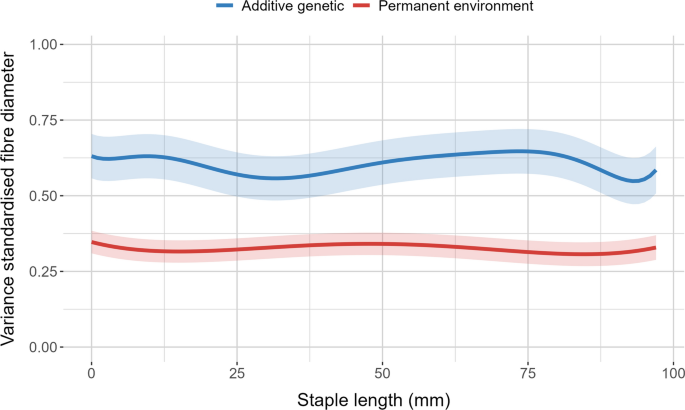Maximize Your Fiber Optic Performance: Understanding Optical Fiber Diameter Analyser Innovation
The performance of fiber optic systems is seriously affected by the precision of their diameter, an element typically forgot in the search of optimal signal honesty. Comprehending the innovation behind optical fiber diameter analysers reveals the elaborate equilibrium between measurement accuracy and manufacturing top quality.
Relevance of Optical Fiber Diameter
The diameter of optical fiber plays a vital role in figuring out the efficiency and effectiveness of interaction systems. Conversely, smaller sizes often tend to sustain fewer settings, which can improve signal quality and lower crosstalk.

Moreover, recognizing the size's implications can cause cost savings by lowering the requirement for signal amplification and repeaters in comprehensive networks (optical fibre diameter analyser). Finally, the value of optical fibre diameter can not be overemphasized, as it straight impacts the total performance and dependability of modern interaction systems

How Size Impacts Signal Quality
Signal quality in optical fiber systems pivots considerably on the diameter of the fiber. A smaller sized diameter can lead to higher depletion rates, resulting in signal loss as light trips via the fiber.
On the other hand, bigger sizes typically permit enhanced light capture and minimized modal dispersion, improving signal clearness. In multimode fibers, a bigger core diameter can sustain numerous light settings, but it might likewise present intermodal diffusion, which can degrade signal quality. Picking the ideal fiber diameter is essential for achieving the desired efficiency in specific applications.
Furthermore, the communication in between the fibre diameter and the wavelength of the light made use of plays a critical function in identifying the reliable transmission distance and general signal honesty. Comprehending how fibre size impacts signal quality is necessary for network designers and engineers aiming to maximize optical fiber systems for trustworthy, high-speed information transmission.
Summary of Diameter Analyser Technology
In several optical fibre manufacturing procedures, accurate dimension of fibre diameter is crucial for making certain regular performance and high quality (optical fibre diameter analyser). Diameter analysers are innovative instruments developed to assess the physical measurements of optical fibers with high accuracy. They use advanced optical and laser technologies to determine the size, ovality, and concentricity of the fiber, thus offering important information for quality assurance
These analysers can run in-line throughout the production procedure or as part of off-line testing methods. In-line systems enable real-time surveillance, enabling makers to change specifications promptly, therefore keeping ideal production conditions. Off-line analysers, on the other hand, offer extensive examinations of sets, making sure that any kind of inconsistencies from defined resistances are determined and addressed.
Diameter analysers dramatically add to the decrease of issues in optical fibers, improving total item dependability. By regularly measuring key specifications, these technologies assist in conformity with industry requirements and specs. As the demand for high-performance optical fibres proceeds to climb, the role of diameter analysers ends up being significantly important in accomplishing the wanted quality and performance criteria in fibre optic systems.
Key Attributes of Fibre Size Analysers
Although various versions of fiber diameter analysers exist, they typically share numerous vital features that boost their performance and reliability. Among the most substantial functions is high-resolution measurement capacities, which guarantee exact diameter analyses, crucial for keeping top quality control in fiber manufacturing. Furthermore, numerous analysers incorporate sophisticated optical sensing units designed to identify minute variations in fiber diameter, therefore providing vital information for process optimization.
An additional important feature is real-time tracking, enabling drivers to receive instant feedback on fiber size throughout the production process (optical fibre diameter analyser). This ability helps with rapid adjustments and minimizes the probability of flaws. Several analysers also come outfitted with straightforward user interfaces, allowing find here drivers to easily browse with data and settings results
In addition, robust data storage and evaluation capabilities are essential for tracking historical performance patterns and ensuring conformity with sector standards. These features jointly add to the efficacy of fibre size analysers in enhancing fibre optic efficiency.
Finest Practices for Fiber Optimization
First, regular calibration of optical their website fibre size analysers is essential. This ensures accurate dimensions and decreases potential discrepancies that might influence performance. Next, keeping a clean workplace is important; dirt and impurities can result in indicate destruction.
Additionally, it is very important to select fibres that satisfy certain application requirements. This includes evaluating variables such as attenuation, bandwidth, and ecological problems. Proper installment techniques should also be complied with, consisting of avoiding sharp bends and too much tension, which can compromise fiber stability.
In addition, you can try here utilizing innovative tracking systems can help with real-time performance assessments, making it possible for punctual recognition of issues. Regular screening and maintenance should be carried out to guarantee that fibres remain within ideal operational specifications.
Lastly, training employees on the newest fibre optimization modern technologies and techniques will enhance their capacity to execute effective approaches. By adhering to these best techniques, organizations can dramatically boost the efficiency and lifespan of their optical fiber systems, making certain reliable communication and information transfer.
Conclusion
In verdict, the combination of optical fibre size analyser innovation is essential for making best use of fiber optic efficiency. By making certain precise measurements of fiber measurements, these analysers significantly improve signal top quality and reduce losses throughout data transmission.
Signal high quality in optical fibre systems hinges substantially on the diameter of the fibre.In many optical fiber production procedures, exact dimension of fibre diameter is essential for guaranteeing consistent performance and top quality. As the demand for high-performance optical fibers continues to climb, the duty of diameter analysers becomes increasingly important in achieving the desired quality and performance requirements in fibre optic systems.
These attributes jointly add to the efficacy of fiber diameter analysers in maximizing fiber optic efficiency.
In conclusion, the combination of optical fibre size analyser technology is important for taking full advantage of fibre optic performance.